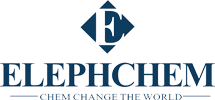Overview
Provided that compounds are are appropriately formulated and processed, the resulting vulcanizates demonstrate excellent resistance to environmental factors such as weather and ozone. Additionally, they exhibit strong resistance to aging, hot air, and various chemicals, as well as adequate resistance to oils and gasoline. Furthermore, these materials possess favorable mechanical and physical characteristics, along with notable abrasion resistance.
Applications
Products created from precisely formulated CR compounds are appropriate for various applications, including moldings and extrusions, reinforced hoses, roll covers, conveyor belts, air spring bellows, cable insulation, thermal insulation, sponge rubber, corrosion-resistant coatings, protective sheathing, fabric treatments, and footwear such as boots.
Package
Packed in plastic drum or bag
Storage
This product must be stored and transported in a well-ventilated and dry environment, with the packaging remaining undamaged and shielded from light and sunlight.
Neoprene Latex Product Summary:
|
Grades |
Main categories |
Solid Content(wt.%) |
Viscosity(mPa.s) |
Surface Tension(N/m*10-3) |
PH |
Density(g/cm3) |
|
Anionic Chloroprene Latex |
50±1.5 |
10-40 |
≤40 |
≥12 |
≥1.10 |
|
|
Anionic Chloroprene Latex |
50±1.5 |
10-40 |
≤45 |
≥12 |
≥1.10 |
|
|
Cationic Chloroprene Latex |
50 |
10-35 |
20-40 |
/ |
1.100 |
Synthetic chloroprene rubber Product Summary:
|
Grades |
Density |
Specific Heat |
Volume Resistance |
Crystallization Rate |
Volatiles(wt.%) |
Ash(wt.%) |
|
1.23 |
2.18 |
109 ~1012 |
Medium |
≤0.8 |
≤1.0 |
|
|
1.23 |
2.18 |
109 ~1012 |
Medium |
≤0.8 |
≤1.0 |
|
|
1.23 |
2.18 |
109 ~1012 |
Medium |
≤0.8 |
≤1.0 |
|
|
1.23 |
2.18 |
109 ~1012 |
Fast |
≤0.8 |
≤1.0 |
|
|
1.23 |
2.18 |
109 ~1012 |
Fast |
≤1.3 |
≤1.0 |
|
|
1.23 |
2.18 |
109 ~1012 |
Fast |
≤0.8 |
≤1.0 |
|
|
1.23 |
2.18 |
109 ~1012 |
Fast |
≤0.8 |
≤1.0 |
|
|
1.23 |
2.18 |
109 ~1012 |
Fast |
≤1.3 |
≤1.0 |
|
|
1.23 |
2.18 |
109 ~1012 |
Fast |
≤1.3 |
≤1.0 |
|
|
1.23 |
2.18 |
109 ~1012 |
Fast |
≤1.3 |
≤1.0 |
Overview Polyvinyl alcohol (PVA for short), organic compound, white flake, flocculent or powdered solid, non-toxic, tasteless, pollution-free, can be dissolved in 80--90 °C water. Slightly soluble in dimethyl sulfoxide. Its aqueous solution has good adhesion and film-forming properties; It has chemical properties such as esterification, etherification and acetalation of long-chain polyols. It is a water-soluble polymer with a wide range of uses, its performance is between plastic and rubber, and its uses can be divided into fiber and non-fiber two major uses.
Overview VAE emulsion is short for ethylene acetate-ethylene copolymerization emulsion, which is a polymer emulsion made of ethylene acetate and ethylene monomer as the basic raw materials and other auxiliary materials through emulsion polymerization. Ethylene and vinyl acetate copolymer is the most important product of ethylene copolymer, generally referred to as EVA. Products with ethylene acetate content in the range of 70%~95% are usually in the emulsion state, called VAE emulsions.
Overview Polyvinyl alcohol film is made of polyvinyl alcohol as the main component, adding additives such as modifiers, and processed by special technology. PVA film is a green functional material that can be degraded into carbon dioxide and water by microorganisms in the soil in a short time which has the effect of improving land conditions.
Overview PolyVinyl Butyral Film(PVB film) is also known as PVB interlayer.Its essence is a thermoplastic resin film, which is produced from PVB resin plus plasticizer. Since it is produced from plastic resin, it has the characteristics of recyclable processing and reusability.The appearance is translucent film, no impurities, smooth surface, with a certain roughness and good softness, with the adhesion of inorganic glass, transparent, heat resistance, cold resistance, moisture resistance and high mechanical strength characteristics.
Overview EVA is a thermoplastic copolymer manufactured through the free radical polymerization of ethylene and vinyl acetate in the presence of initiating agents using the high-pressure bulk polymerization process. EVA's properties vary dramatically from one product to another depending on the content of vinyl acetate in the macromolecule. EVAs with different properties are used for different purposes.
Overview Modified polyvinyl alcohol (PVOH) is graded according to different degrees of polymerization, hydrolysis and copolymerization monomers. The modification of PVA is mainly to use the double bonds, ester groups and the chemical activity of the hydroxyl group after alcoholization of vinyl acetate to change the side chain group or structure, and introduce other monomers to become copolymers dominated by PVA.
Overview Vinyl Acetate Monomer (VAM) is a colorless flammable liquid with sweet ether flavor. There are several different raw materials such as acetylene method, ethylene method, acetaldehyde acetic anhydride and so on. The route of ethylene raw materials is different according to the process, and there are different methods such as ethylene gas phase method and ethylene liquid phase method.
Overview Water soluble PVA fiber is a kind of PVA fiber made from polyvinyl alcohol through wet spinning, heat treatment and crimping-oiling in water at normal temperature. It is good in dry heat stability, physical and mechanical properties. The remarkable characteristic is its total dissolving in water at a range of temperature. This kind of PVA fiber is mainly used in Textile industry for making the yarn and cotton.
Overview Provided that compounds are are appropriately formulated and processed, the resulting vulcanizates demonstrate excellent resistance to environmental factors such as weather and ozone. Additionally, they exhibit strong resistance to aging, hot air, and various chemicals, as well as adequate resistance to oils and gasoline. Furthermore, these materials possess favorable mechanical and physical characteristics, along with notable abrasion resistance.
Overview PVA high strength and high modulus fiber takes polyvinyl alcohol as its major raw materials. It has good prosperities such as high modulus, high strength, alkali and acid resistance, heat resistance, anti-crack, anti-infiltration and so on. High strength and high modulus PVA fiber also has good compatibility with cement and other macromolecule material and can prevent the microcrack caused by plastic shrinkage of the concrete.
Overview Polyvinyl butyral (PVB for short) is the product of acid catalysis of polyvinyl alcohol and butyraldehyde. Because PVB molecules contain long branched chains, they have good compliance, low glass transition temperature, and high tensile strength and impact strength. PVB has excellent transparency, good solubility, good light resistance, water resistance, heat resistance, cold resistance and film formation. It has high adhesion to materials such as glass and metal (especially aluminum). Therefore, it has been widely used in the manufacture of laminated safety glass, adhesives, ceramic paper, aluminum foil, electrical materials, FRP products, fabric treatment agents and other fields, and has become an indispensable synthetic resin material.
Overview Dispersible polymer powder is a modified emulsion powder obtained by spray drying of a binary or ternary copolymer of vinyl acetate and tertiary vinyl carbonate-VeoVa or ethylene or acrylate, which has good redispersibility, redispersed into an emulsion when in contact with water, and its chemical properties are exactly the same as the initial emulsion.
Overview Polyvinyl acetate multipurpose white glue series adopts the latest process and formula to produce water-based adhesives, which have the advantages of high adhesion, fast curing and easy brushing, which effectively solves the problem of low bonding strength and long curing time of white glue, and has good water resistance and moisture resistance after curing.
Overview JiangSu ElephChem Holding Limited offers a wide range of chloroprene rubber products, primarily including seven major series: CR244, CR248, CR232, CR121, CR322, DCR213, and DCR114. These products boast a complete range of grades, excellent quality, and outstanding cost-effectiveness. They include slow-crystallizing, cold-resistant rubber series products comparable to those of Denka and ARLANXEO, and have received widespread acclaim from domestic and international customers.
Overview SNL-511A is a gel-like synthetic latex characterized by its gradual crystallization rate, ease of application by spraying, effective flame resistance, and versatility in bonding various materials. It has diverse applications and can be utilized independently or blended with natural latex or other types of synthetic latex.
Overview SNL-5042 latex exhibits strong initial adhesion, rapid setting time, commendable shelf stability, is non-toxic, solvent-free, and demonstrates resistance to ozone, environmental conditions, oils, chemical degradation, in addition to possessing superior flame-retardant properties.
Overview Chloroprene Latex CRL-50LK is a highly concentrated, environmentally friendly, gel-type synthetic latex with excellent aging, oil and corrosion resistance.
Overview Chloroprene Rubber SN-236T exhibits a significantly elevated Mooney viscosity along with medium crystallization rate, demonstrating superior cohesion and solubility characteristics, making it particularly well-suited for adhesive formulation.
Overview SN-238 is a versatile mercaptan-modified polychloroprene rubber characterized by medium rate of crystallization. Compounds formulated with SN-238 demonstrate robust resistance to oil, chemicals, ozone, aging, sunlight, fire, and possess commendable electrical properties.
Overview SN-239 is a multifunctional mercaptan-modified polychloroprene rubber that exhibits medium crystallization rate. A notable feature of this material is its exceptional tear strength, which remains impressive even under conditions of high filler content or plasticization.
Overview Chloroprene Rubber SN-240T is a general purpose, mercaptan modified polychloroprene rubber produced by emulsion polymerization. SN240T has high bond strength, good spray ability and brush ability, and a high rate of crystallization. SN-240T has fast crystallization and strong cohesive capabilities.
Overview Chloroprene Rubber SN-241 exhibits a high bond strength,characterized by fast crystallization rate. This compound demonstrates enhanced solubility and uniformity, making it suitable for producing adhesive cements that are notably light in color and display excellent storage stability.
Overview SN-242A is a mercaptan-modified chloroprene rubber characterized by its exceptional adhesive qualities and fast crystallization rate. Adhesive cements formulated using SN-242 are notable for their light color, high bonding strength, rapid grip development, and ease of application, while maintaining a long-lasting adhesion layer.
Overview SN-242B is a chloroprene rubber that has been modified with mercaptan, characterized by its exceptional adhesive properties and fast crystallization rate. It exhibits robust resistance to ozone, environmental factors, oils, chemical deterioration, and fire.
Overview SN-243 is a chloroprene rubber modified with mercaptan that exhibits remarkable adhesive strength alongside a fast crystallization rate. It also demonstrates outstanding and expedited film formation capabilities.
Overview Chloroprene Rubber SN-244X exhibits fast crystallization rate, stronger adhesion, and excellent storage stability. It also has excellent resistance to oil, various chemicals, ozone, aging, and sunlight, while also possessing the typical fire resistance and electrical insulation properties of neoprene..
Overview Neoprene SN-245 is a high-bonding chloroprene rubber with fast crystallization rate and strong cohesion. It is a high-viscosity rubber with good solubility and uniformity. It is resistant to ozone, weathering, oil, and chemical corrosion, and has excellent flame retardancy.

Signup our newsletter to get update information, promotion and insight.
